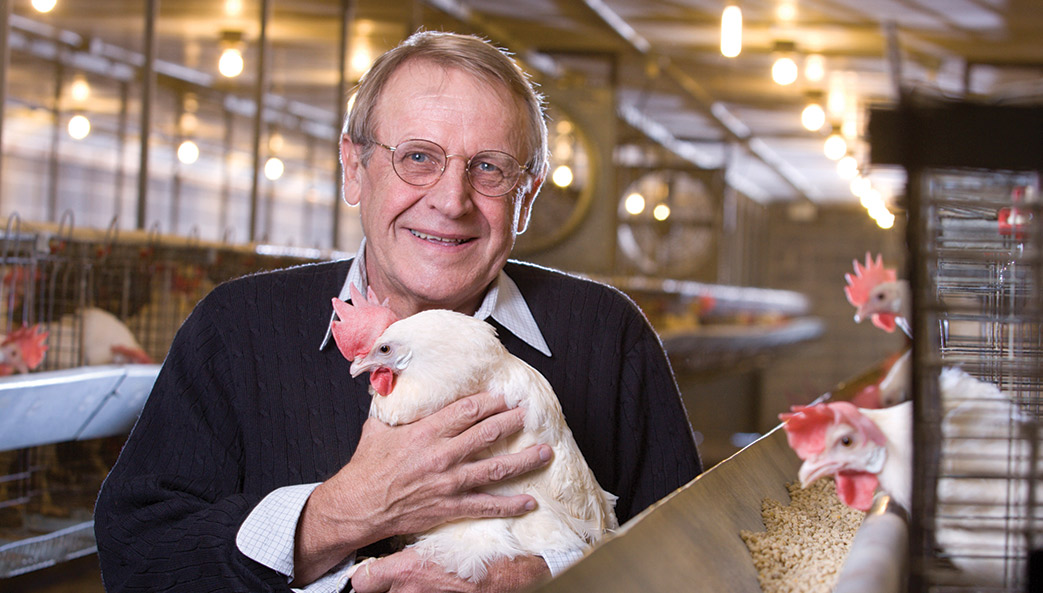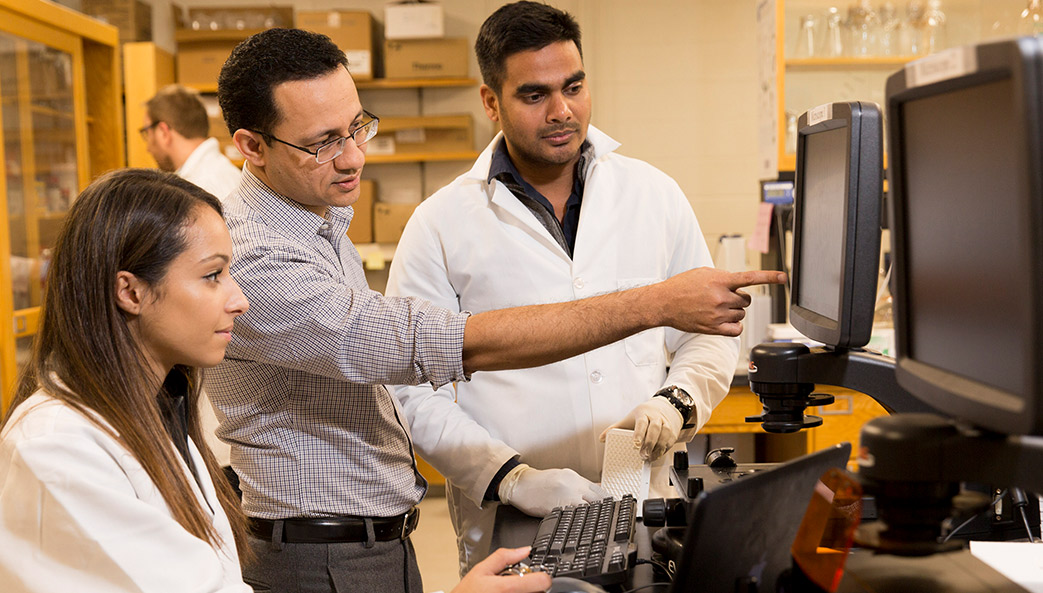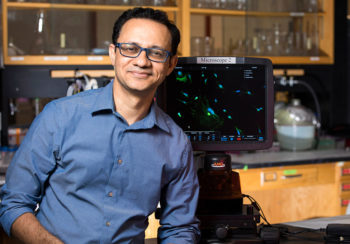May 10, 2016
It was with no small sense of anticipation that Robert Ivarie peered through the doors of an egg production facility in Elberton, Georgia, and scanned the massive room filled with strange-looking equipment and a virtual army of clucking chickens. This was unfamiliar territory for the UGA geneticist, and he longed for the relative comfort of his campus laboratory.
But Ivarie needed to see first-hand how the operation ran, because he was planning an audacious new research project, and the chickens would play a pivotal role. What he saw that day made him confident his plan would work.
It was the spring of 1996, and Ivarie had asked a friend working in the poultry industry for a tour of the henhouse. As they strolled along the floor, he watched with fascination as a continuous stream of freshly laid eggs tumbled gently down a series of conveyors and chutes on their way to a packaging station, where they were boxed and placed on a waiting truck.
“How many eggs today?” Ivarie asked.
“Eighty-five thousand,” said his friend.
That was all he needed to hear. Ivarie went back to his lab with renewed enthusiasm for an idea that could dramatically impact the pharmaceutical industry: he was going to use chickens to make medicine.
The incredible, medical egg
The fundamental idea behind Ivarie’s plan was relatively simple. Chicken eggs are naturally rich in a variety of nutritionally important proteins, a fact that has made them a popular breakfast choice for bodybuilders and athletes working to develop their muscles.
Ivarie wanted to create genetically modified chickens that would lay eggs containing proteins that could be purified and turned into therapeutics for humans.
“The average egg white contains about four grams of protein,” Ivarie said. “When I toured that facility in Elberton, I had an epiphany. Production would never be a problem, because the poultry industry already has that figured out. All we had to do was make the chickens, and we could get huge quantities of biopharmaceutical grade proteins relatively easily.”
Ivarie didn’t waste any time. That same year, he founded a startup company called AviGenics, and he hired Alex Harvey, who was working as a postdoctoral researcher in a colleague’s laboratory, to help him create the technology.
Ivarie and Harvey experimented with dozens of different approaches, and they and their co-workers eventually developed a suite of technologies allowing the generation of transgenic chickens by injecting a specially designed virus into freshly laid eggs. The chicks that hatched from these eggs developed into mature chickens that laid eggs containing the desired proteins in the egg whites.
“The virus acts like a delivery vehicle for a genetic code,” said Harvey. “We weaken the virus so it is incapable of replicating or causing disease, but it’s still able to transport small pieces of DNA into the developing chicken. Once that DNA segment bonds with the chicken genome, that makes the chicken lay the right kind of egg.”
To market, to market
It was an arduous process, but over time they perfected their technique, and they began producing a variety of medically important proteins using the platform. The company was also getting noticed by others in the industry.
AviGenics was acquired by outside investors and changed its name to Synageva BioPharma in 2008, growing from a promising platform technology into a mature company while being nurtured in UGA’s startup incubator in Athens, now known as Innovation Gateway.
It was gratifying for Ivarie to see his business take off, but his greatest satisfaction came late last year when the U.S. Food and Drug administration approved the sale of a drug manufactured using his techniques as the first treatment for patients with an ultra-rare and often fatal disease known as lysosomal acid lipase deficiency.
Patients suffering from LAL deficiency—also known as Wolman disease and cholesteryl ester storage disease—do not produce enough of the enzymes that normally break down fatty material in the body. This leads to a build-up of fats that can cause liver failure and heart disease.
“It’s a horrific disease,” said Harvey. “Many children born with this disorder won’t live to see their first birthday, and people with less severe forms of the disease may make it to their thirties or forties, but they often require liver transplants to stay alive.”
Now, thanks to Ivarie’s early work and partnerships with the pharmaceutical industry, scientists can create the proteins that LAL-deficient patients lack and administer them intravenously. The treatment is nothing short of a new lease on life.
When Ivarie, now a professor emeritus, reflects on the 20 years’ worth of work that led to this discovery, he can’t help but feel proud.
“What could be more satisfying?” he asked. “You have a little kid who is battling a life-threatening illness, and when you give them a drug that you’ve helped create, they become healthy again. That’s an amazing feeling.”
Ivarie is also proud of the fact that his scientific work led to the creation of a viable business.
“This is a great example of a small company that turned into a real job generator,” he said. “We have an exceptional talent base at the University of Georgia, and the technologies our faculty and staff are developing can create new businesses and jobs. It can be done, and more importantly it can be done right here in Georgia.”
But the promise of Ivarie’s technology extends beyond the success of a single drug or company, as the same fundamental techniques could serve as the foundation of new protein-based therapeutics for a variety of diseases and disorders.
“We can use this process to create almost any protein,” Ivarie said. “I think the future for this technology is bright.”






